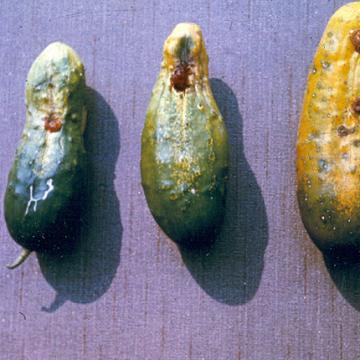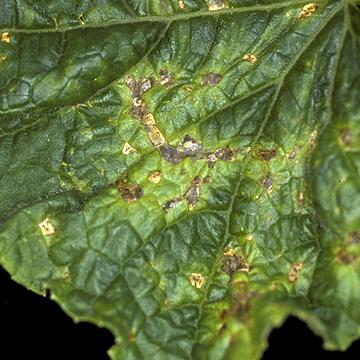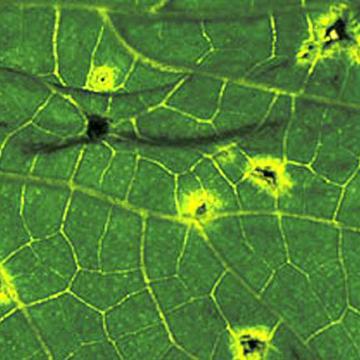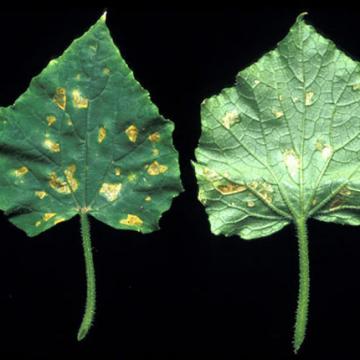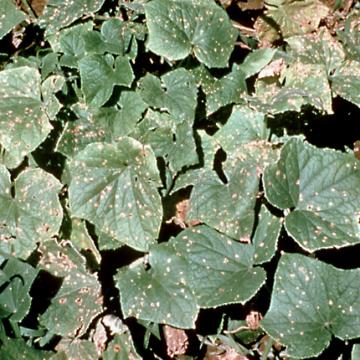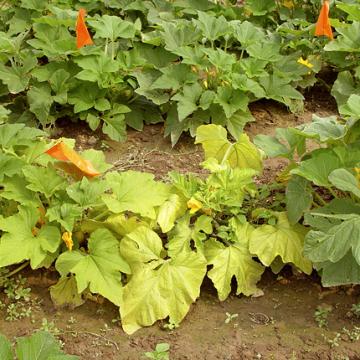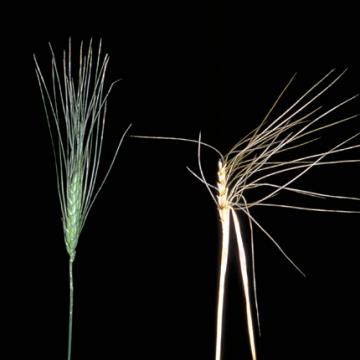DISEASE: Angular leaf spot
HOST: Cucumber
Yellowish diseased cucumbers with bacterial ooze.
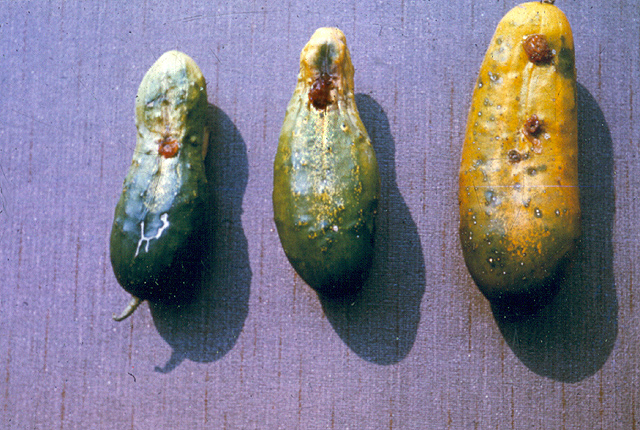
Angular leaf spot | Cucumber
DISEASE: Angular leaf spot
HOST: Cucumber (Cucumis sativus)
PATHOGEN: Pseudomonas syringae pv. lachrymans
SOURCE: B. Jacobsen, M. Shurtleff
DISEASE: Angular leaf spot
HOST: Cucumber
Cucumber leaves with angular, tan lesions of various sizes.
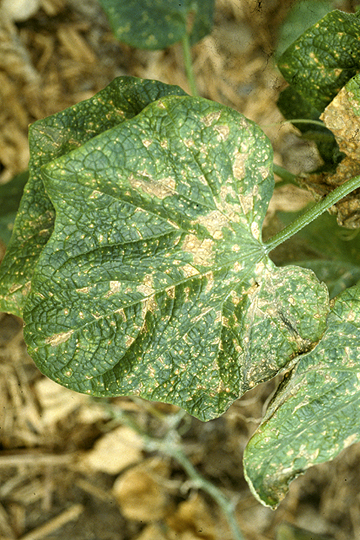
Angular leaf spot | Cucumber
DISEASE: Angular leaf spot
HOST: Cucumber (Cucumis sativus)
PATHOGEN: Pseudomonas syringae pv. lachrymans
SOURCE: M. Goto
DISEASE: Angular leaf spot
HOST: Cucumber
Cucumber leaf with water-soaked lesions. Lesions extend until they meet a secondary vein, resulting in angular appearance.
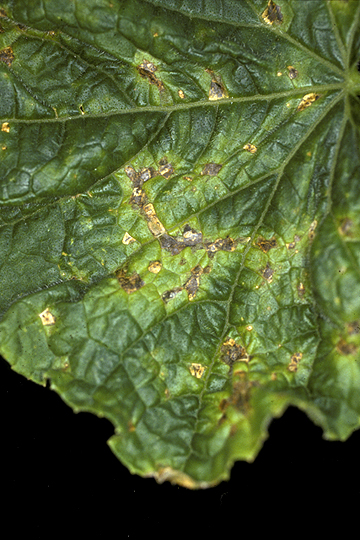
Angular leaf spot | Cucumber
DISEASE: Angular leaf spot
HOST: Cucumber (Cucumis sativus)
PATHOGEN: Pseudomonas syringae pv. lachrymans
SOURCE: S. Thomson
DISEASE: Angular leaf spot
HOST: Cucumber
Cucumber leaf with dark lesions surrounded by halos, another common symptom.
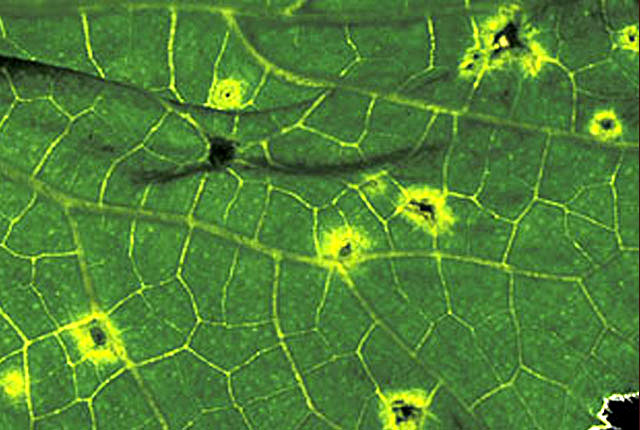
Angular leaf spot | Cucumber
DISEASE: Angular leaf spot
HOST: Cucumber (Cucumis sativus)
PATHOGEN: Pseudomonas syringae pv. lachrymans
SOURCE: J. Young
DISEASE: Angular leaf spot
HOST: Cucumber
Leaves with yellowish, angular spots.
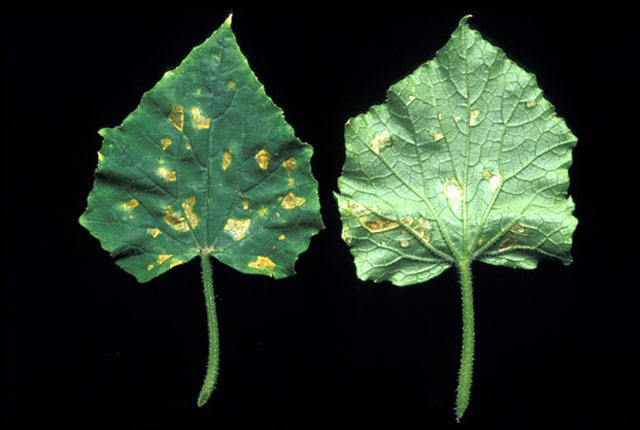
Angular leaf spot | Cucumber
DISEASE: Angular leaf spot
HOST: Cucumber (Cucumis sativus)
PATHOGEN: Pseudomonas syringae pv. lachrymans
SOURCE: J. Young
DISEASE: Angular leaf spot
HOST: Cucumber
Angular necrotic spots delimited by leaf veins.

Angular leaf spot | Cucumber
DISEASE: Angular leaf spot
HOST: Cucumber (Cucumis sativus)
PATHOGEN: Pseudomonas syringae pv. lachrymans
SOURCE: N. Tisserat, L. Claflin
DISEASE: Aster yellows
HOST: Squash
Diagnostic characteristics for the disease are yellowing of young leaves, proliferation of secondary shoots, and rigid erect habit. Leaves are misshapen and smaller than normal and have stiff, thick laminae.
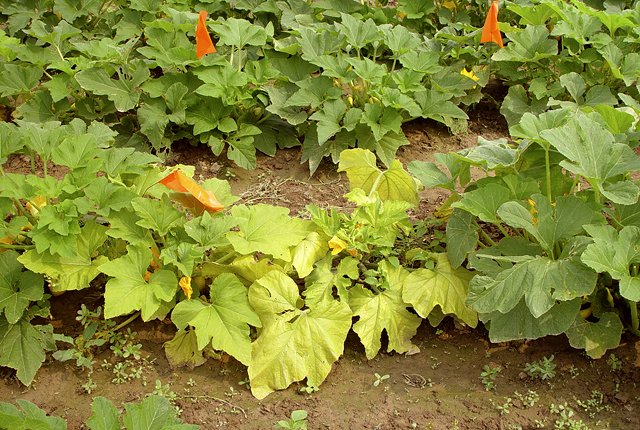
Aster yellows | Squash
DISEASE: Aster yellows
HOST: Squash (Cucurbita sp.)
PATHOGEN: 'Candidatus Phytoplasma asteris'
PATHOGEN SYNONYM: Phytoplasma Aster yellows group
SOURCE: S. Miller
DISEASE: Aster yellows
HOST: Wheat
Healthy head (left) and diseased head (right). Diseased seedlings may die within 2 to 3 weeks. Infected heads of surviving plants are small and sterile, with distorted awns.

Aster yellows | Wheat
DISEASE: Aster yellows
HOST: Wheat (Triticum aestivum)
PATHOGEN: 'Candidatus Phytoplasma asteris'
PATHOGEN SYNONYM: Phytoplasma Aster yellows group
SOURCE: L. N. Chiykowski
DISEASE: Bacterial leaf blight
HOST: Wheat
Diseased leaves with whitish blotches. Initial water-soaked spots become necrotic and progress from gray-green to tannish white.
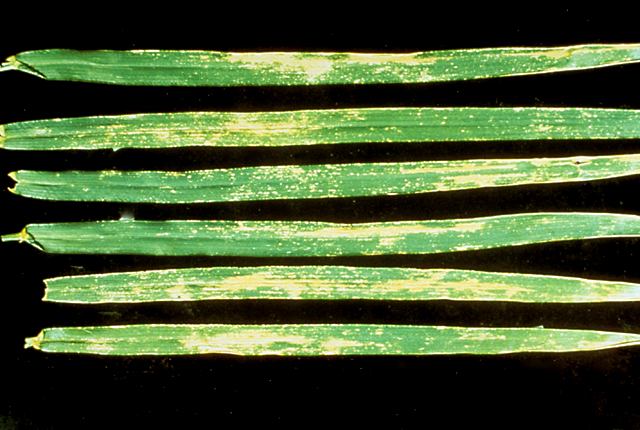
Bacterial leaf blight | Wheat
DISEASE: Bacterial leaf blight
HOST: Wheat (Triticum aestivum)
PATHOGEN: Pseudomonas syringae pv. syringae
SOURCE: J. Otta


